Banana plants are often wrongly identified as palms or trees when they are actually giant herbs related to orchids and lilies. They grow in clusters hanging from the plant, thrive best in hot humid climates, and are available all year round. The bananas are subdivided into 50 groups and come in different sizes, colors, tastes, and firmness.
Bananas can be made into delicious smoothies for their thick consistency or used for baking banana bread and banana muffins. Some people claim that this golden fruit is a healthy choice while others try to avoid it. But can bananas cause diarrhea? Read on to find out!
Origins Of Bananas
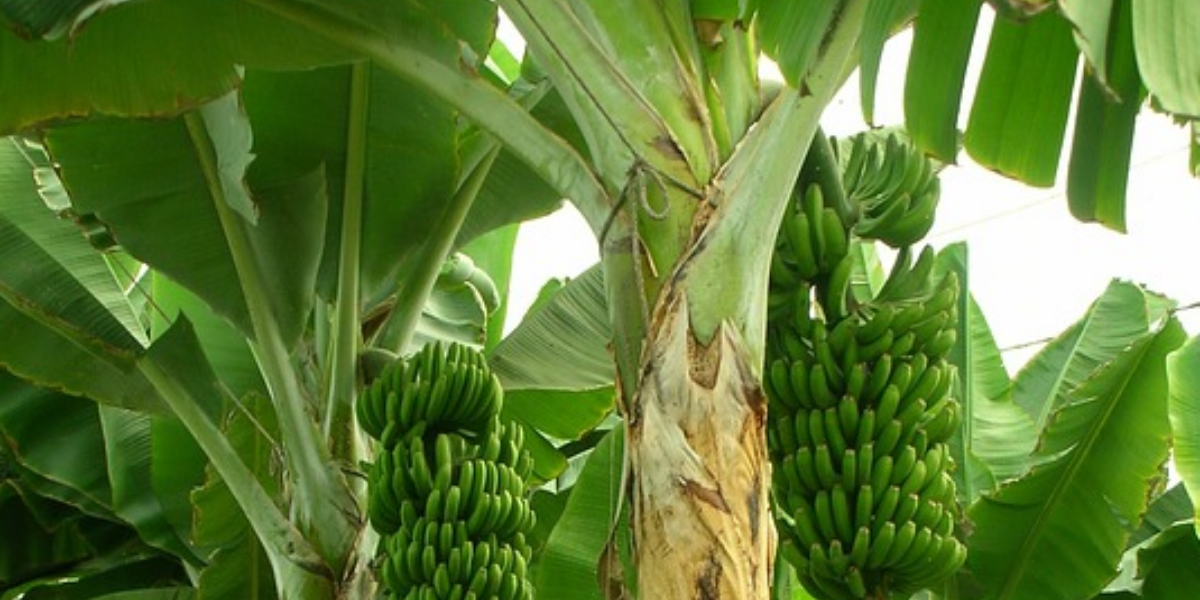
Bananas originated in Southeast Asia, particularly in the islands of Malaysia, Indonesia, and the Philippines. The banana thrives best in hot tropical climates and is said to be “perennial” because it has the ability to replace itself. Bananas grow from a bulb or rhizome instead of a seed and, unlike most fruits that are “seasonal”, they are available throughout the year.
Today, bananas are also grown in tropical regions like South and Central America, India, and Africa. The word “banana” was derived from the Arab word meaning “finger” as each row of banana is called a “hand” and each hand has from 14 to 20 fingers. By the end of the 14th century, the international trade for bananas had begun and the advances in transportation and refrigeration technologies in later years have made bananas the most traded fruit worldwide.
5 Main Types Of Bananas
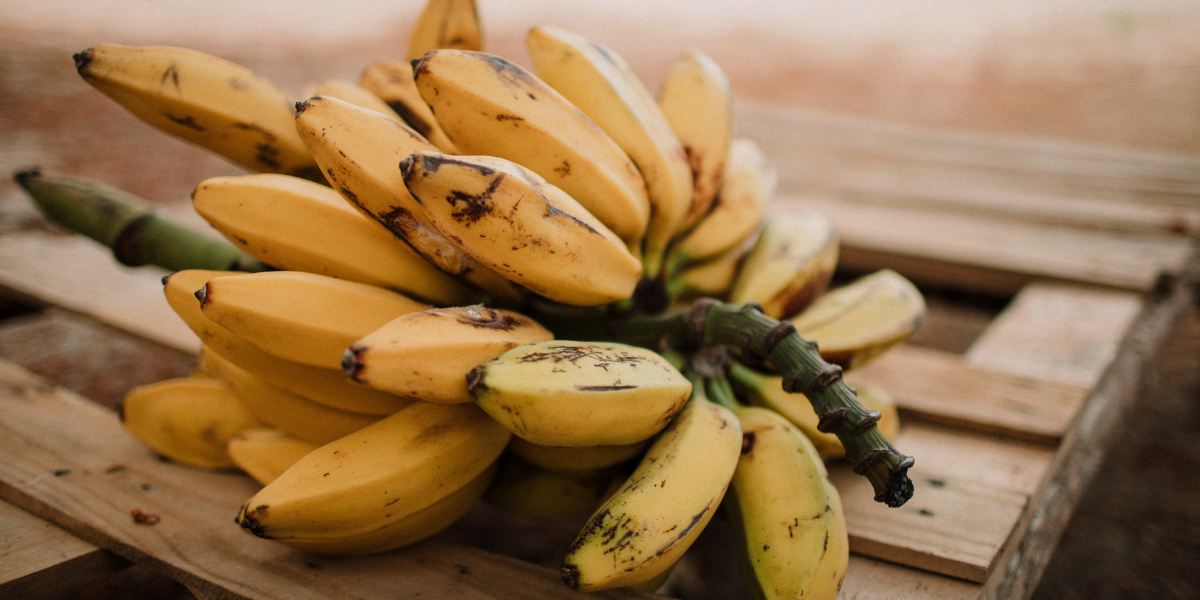
If you think that the yellow bananas you buy at the grocery store or market are the only kind of bananas, then you are sorely mistaken. There are over 1000 varieties of bananas being grown all over the world, although about half are inedible. However, we will just enumerate the more popular varieties and they include the following:
- Cavendish- Also called “dessert banana,” this is the classic variety that you can often find in your local grocery or farmer’s market. This banana tastes mildly sweet when its color has turned golden yellow tinged with some brown spots. As it ripens, the peel changes from being stiff and thick to thinner and more flexible.
- Plantain – Otherwise known as “green banana” or “cooking banana,” this type is larger, starchier, and less sweet and is often used for cooking. It is considered to be a major source of carbohydrates in tropical regions and may be boiled, fried, baked, or sometimes eaten.
- Red Banana – Shorter and plumper in size, this banana variety has a dark reddish-purple hue with light pink colored flesh. They are creamy with a slight raspberry flavor and are often sweeter than Cavendish bananas.
- Apple Banana – So-called for their exceptionally sweet flavor, apple bananas have firm flesh and a slightly pinkish hue. They are ideal for snacking or for use in desserts like fruit salads and other raw preparations as they don’t turn brown as quickly as other varieties of bananas.
- Lady Finger – Also known as “baby banana” or “sugar banana,” this type is smaller and thinner than Cavendish bananas and has a cigar-like shape. It has a creamy consistency with a sweeter taste than common bananas and is often eaten fresh or used in desserts.
All banana varieties have a mildly sweet flavor, starchy texture, and the ability to keep on ripening even after they have been gathered from their trees. It takes Bananas are best stored at room temperature where they can continue to ripen gradually.
Nutrition Facts
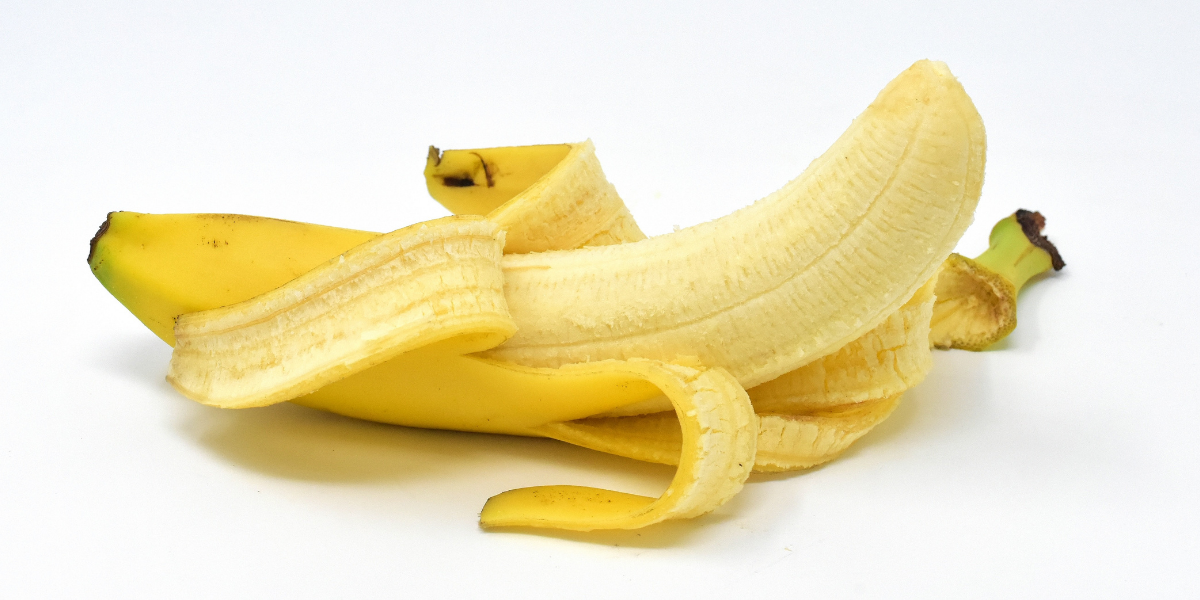
Nutrition Facts
Here is the nutritional value of one regular-sized banana (126 grams) based upon the percentage daily value of a 2000-calorie diet:
Calories 112
Protein 1.37 grams
Sugar 15.41 grams
Fat 0.42 grams or 1% of the Daily Value (DV)
Fiber 3.3 grams or 12% of the DV
Carbohydrates 28.78 grams or 10% of the DV
Cholesterol 0 mg or 0% of the DV
Manganese 0.27 mg or 13% of the DV
Iron 0.33 mg or 2% of the DV
Vitamin B6 0.4 mg or 31% of the DV
Sodium 1 mg or 0% of the DV
Calcium 6 mg or 0% of the DV
Vitamin C 11 mg or 12% of the DV
Magnesium 27 mg or 8% of the DV
Potassium 451 mg or 10% of the DV
Vitamin A 4 mcg or 0% of the DV
Niacin 5% of the DV
Folate 6% of the DV
Riboflavin 7% of the DV
Copper 11% of the DV
Almost 75% of a banana is water. The remaining has 1 percent protein and 24 percent carbohydrates. It has all the B vitamins except B12 and contains slight traces of zinc, iron, and phosphorus. Bananas are also cholesterol-free, sodium-free, low in fat, and a good source of fiber.
Stages Of Ripening Of A Banana

As it ripens, the banana undergoes several stages:
I. Green banana – Green bananas are raw so the taste may be a little bitter but they promote good gut bacteria.
II. Yellow banana – Newly-ripened bananas are yellow with no spots and are easier to digest.
III. Spotted banana – This stage of a banana is characterized by brown spots all over the skin to illustrate the starch to sugar conversion.
IV. Brown banana – Brown bananas look unappealing to the eyes but they are ideal for making bread and pancakes as they are easy to mush.
Aside from the color and appearance, the nutritional content and taste of bananas also undergo changes as they ripen. Newly-ripened bananas are less sweet than the fully-ripened ones because the starch has not yet completed the process of breaking down into simple sugars.
Benefits Of Eating Bananas
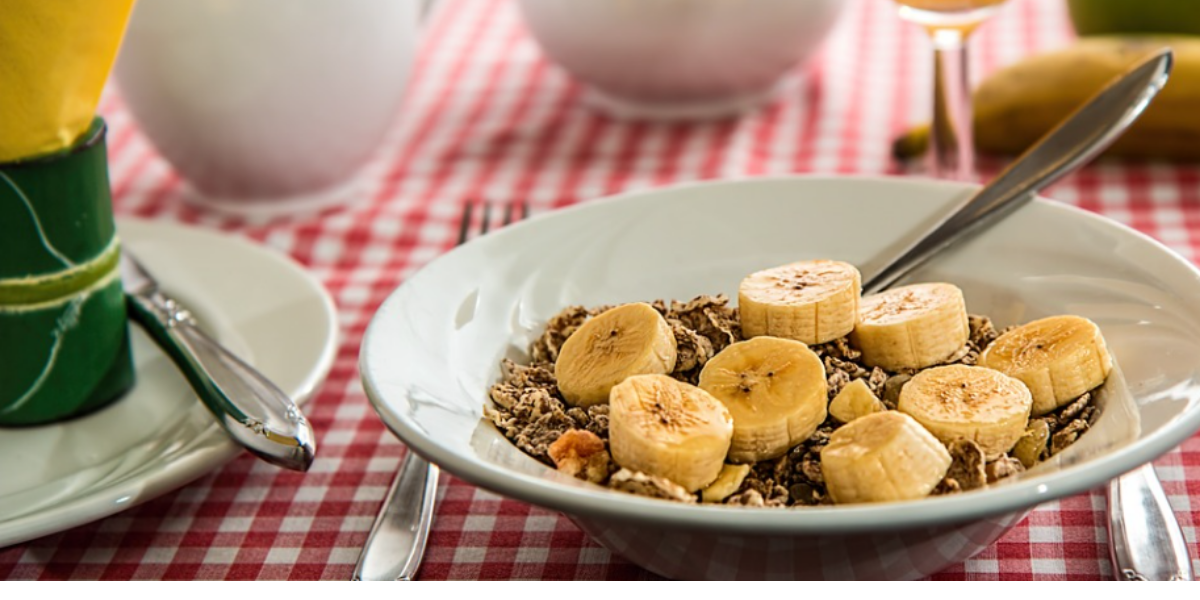
As a rule, you can eat bananas everyday but you must not exceed the recommended daily intake of one or two bananas a day. Otherwise, it can lead to weight gain or some nutritional deficiency.
In the early 20th Century, the American Medical Association endorsed bananas as a health food, particularly for children, and even carried the title of the first “superfood.” Generally, a food is considered to be a superfood when it is high in desirable nutrients, helps prevent diseases, or offers certain health benefits that go above its nutritional value.
Here are the health benefits to be gained from consuming bananas:
- Improves digestion
- Boosts energy level
- Relieves muscle cramp
- Aids in weight loss
- Promotes heart health
- Promotes kidney health
- Helps prevent Type 2 diabetes
- Helps with relaxation and sleep
- Supports exercise recovery
- Assists in wound healing
- Contains antioxidants
In addition, the vitamins and potassium in bananas are good for blood pressure maintenance and overall health. Bananas are an excellent choice for people who want to eat healthy because, aside from the health benefits mentioned above, they are also nutritious, delicious, convenient, and inexpensive to buy.
Can Bananas Cause Diarrhea?
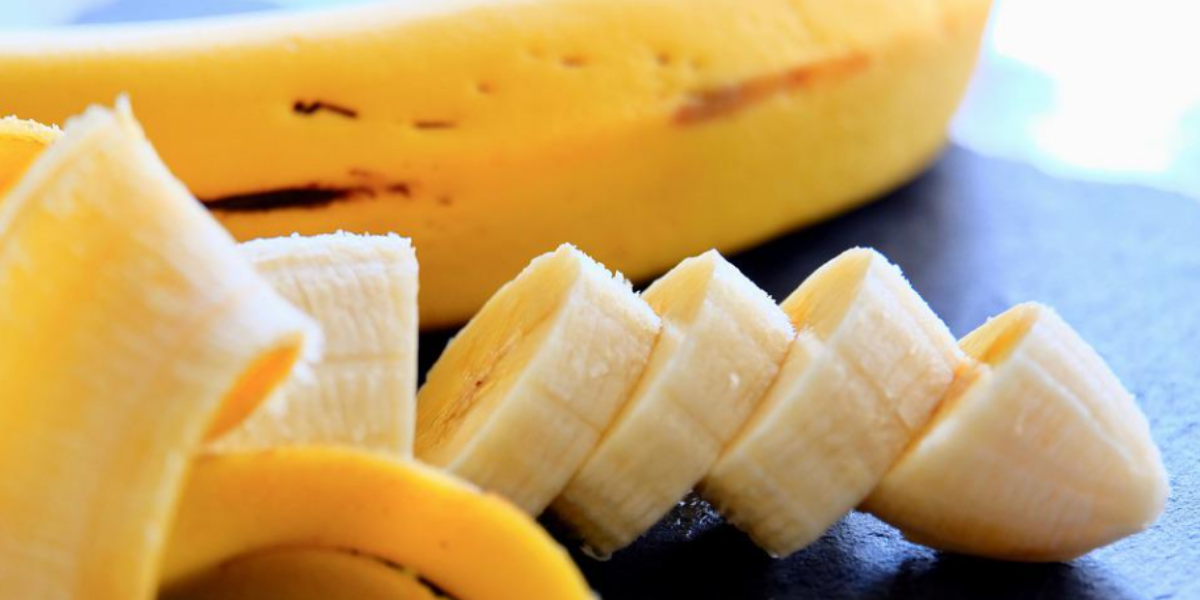
Bananas belong to the BRAT diet which is said to be some of the best anti-diarrhea foods because they help solidify the stool. BRAT is the acronym for bananas, rice, applesauce, and toast which are easy on the stomach and do not irritate the digestive system. On the other hand, just like most health remedies, there may be contradictions.
Traditionally, bananas are known to regularize bowel movement and are said to help with gastrointestinal issues such as constipation, heartburn, and stomach ulcers. But can it also be the other way around? Can bananas cause diarrhea? Here are some reasons it can:
-
Bananas are a good source of prebiotics
Prebiotics are fermentable fibers that feed the good bacteria, otherwise known as probiotics, in the gut. Prebiotics help with digestion by helping the growth of beneficial gut bacteria. Bananas are a good source of prebiotics and pairing them with yogurt and other foods containing live cultures supports gut health and regular bowel movement.
In addition, studies assessing the effects of green bananas found it beneficial in the treatment of both diarrhea and constipation in children. Simply put, eating bananas can help get your digestive system on the right track.
Aside from bananas, here are some other foods considered to be prebiotics which are mostly made up of fiber or complex carbohydrates:
- Oats
- Psyllium
- Nuts and legumes
- Fruits
- Green, leafy vegetables
On the other hand, prebiotics may not always be appropriate for everyone. For example, they can aggravate the symptoms of Irritable Bowel Syndrome (IBS) because rapid fermentation can cause bloating, gas, constipation, or diarrhea in sensitive individuals or during the first few days upon starting consumption of a probiotic.
-
High potassium levels
Some people tend to have a high potassium level or hyperkalemia in the blood due to medical conditions such as chronic kidney disease, lupus, dehydration, or uncontrolled diabetes. Others have a diet high in potassium or take medications that interfere with the kidneys’ ability to lose enough potassium.
When this happens, an individual may experience some signs and symptoms of hyperkalemia such as:
- Diarrhea
- Abdominal pain
- Chest pain
- Heart palpitations
- Numbness in limbs
- Muscle weakness
- Nausea and vomiting
However, these symptoms generally disappear once potassium intake is reduced or stopped.
Hyperkalemia is usually experienced by people suffering from chronic kidney disease. This is due to the fact that the kidneys are responsible for removing excess potassium and other electrolytes from the body. This condition can be classified as either chronic or acute.
Hyperkalemia is generally without symptoms so the best recourse to determine your potassium levels is through a blood test. The National Kidney Foundation says that when blood potassium levels are higher than 5 millimoles per liter (mmol/L), it already indicates hyperkalemia. When left untreated, hyperkalemia can be life-threatening because it can cause paralysis and cardiac arrest.
Bananas are known to be a good source of potassium with one medium-sized banana offering 450 milligrams or 10% of the recommended daily value. Potassium levels can be reduced by boiling the food, taking medications, or making dietary changes by avoiding or limiting the intake of bananas and other potassium-rich foods.
-
Banana Allergy
Bananas may be delicious and nutritious, but it is not for everyone. In rare cases, they can trigger an allergic reaction in certain individuals. Fortunately, less than 1 percent of the world population has a banana allergy. The risk factors for banana allergy include:
- Allergy to other things such as foods, pollen, and plants
- Eczema or atopic dermatitis
- Asthma
- History of oral allergy syndrome with any foods
- Family history of allergies, especially bananas
Allergic reactions to bananas may range from mild to life-threatening and some of these include diarrhea, abdominal pain, vomiting, dizziness, hives, decreased blood pressure, difficulty breathing, or anaphylaxis. For an accurate diagnosis of allergy to specific foods, it may be necessary to consult an allergist.
Generally, people with banana allergy also need to avoid the following cross-reactive foods that can cause oral reactions such as:
- Avocado
- Tomato
- Papaya
- Kiwi
- Chestnut
- Potato
- Celery
- Bell pepper
- Carrot
A banana allergy is an allergic response to specific proteins present in bananas. The proteins in bananas resemble the proteins in certain natural substances such as latex which is used in the production of balloons, hygiene gloves, and condoms. Latex is a known allergen and studies indicate that 20% to 50% of patients who are allergic to latex also show adverse reactions to bananas.
Many people with a mild banana allergy may still be able to eat cooked bananas. This is because cooking bananas causes the allergen proteins to disintegrate. Therefore, there may not be a need for them to avoid cooked foods containing bananas. However, for people with severe allergies to bananas, it is best to avoid them completely.
Other Foods That May Cause Diarrhea
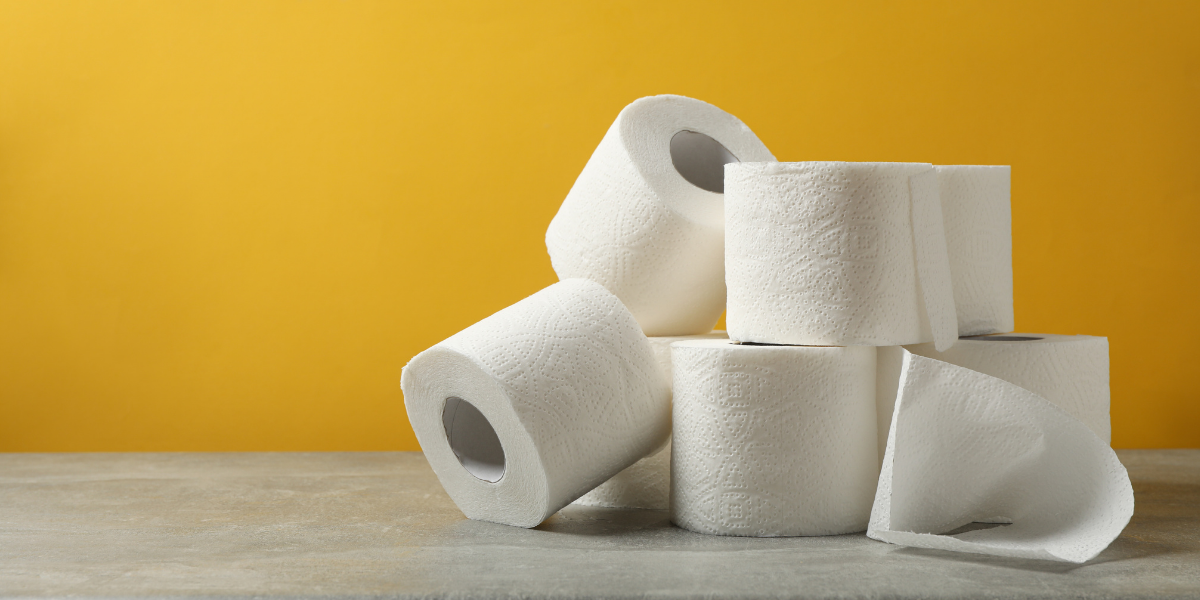
Bananas may cause diarrhea due to certain factors but this is not common knowledge. However, there are other foods that can trigger episodes of diarrhea and they include:
- Milk and other dairy products
- Spicy food
- Coffee
- Sugar substitutes
- Fructose
- Chocolate and chocolate-flavored products
- Garlic and onion
- Broccoli and cauliflower
- Fried or greasy food
- Alcohol
When you have diarrhea, your body is losing more water much faster than usual. It is essential to drink plenty of water to replenish the lost fluids and prevent dehydration.
Sum And Substance

So let us sum it all up. Bananas make for a delicious dessert when eaten raw. They can also be an excellent snack when cooked as they can be steamed, roasted, or fried into tasty chips. One or two regular-sized bananas can also provide a significant amount of your daily nutrients.
Bananas offer a considerable number of health benefits. However, as with all advantages, there are bound to be accompanying disadvantages as well. Can bananas cause diarrhea? Yes, they can and the reasons why have been enumerated in this article.

